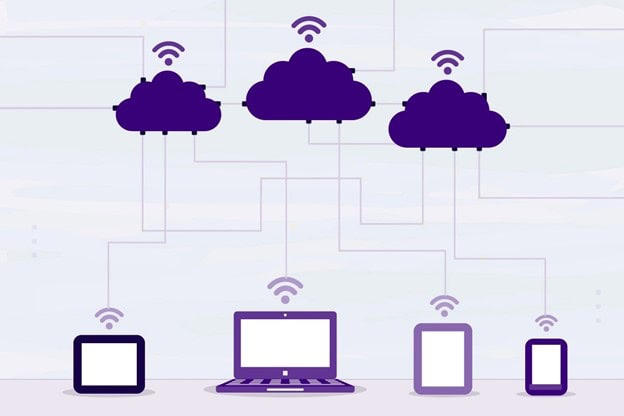Effective communication and collaboration have become crucial for organizations to survive and thrive in this competitive market and world of digital transformation. Effective communication and collaboration require suitable telephony to function as intended. However, traditional telephony might not handle today’s businesses dynamic needs.
How can this problem be addressed in such cases? The obvious answer is modern telephony. Modern telephony offers the ability to connect and collaborate seamlessly and is vital in enabling a connected workforce.
So, in this article, we will discuss the ways of maximizing productivity with modern telephony and how it can be done by creating a connected workforce.
The Role of Modern Telephony in Business Communication
Modern telephony systems have various features and capabilities that enhance connectivity and productivity within organizations. These advancements in technology have transformed business communication and collaboration.
Let’s explore some key features contributing to modern telephony systems’ effectiveness in business communication:
1. Call Routing and Call Forwarding
Call routing and forwarding features ensure that all incoming calls are forwarded and routed to the appropriate place, person, or department. These features transfer all the incoming calls based on the algorithm or predefined rules like time of day, geographic location, or the availability of employees.
This feature enhances customer service and streamlines internal communication.
2. Voice over Internet Protocol (VoIP)
Modern telephony systems use VoIP technology, transmitting voice calls over the Internet instead of traditional phone lines. This allows for cost-effective and efficient communication, eliminating the need for separate phone lines and reducing long-distance charges.
3. Virtual Phone Number
Modern telephony systems allow businesses to obtain virtual phone numbers with local or international area codes. The virtual phone number allows businesses to establish a local presence in different regions or countries, enhancing customer service and facilitating global communication.
A virtual phone number also helps in cost-saving and seamless communication.
4. Unified Communication
Unified communication refers to the combination of various communication channels within an organization. It includes communication channels like voice, video, messaging, and email.
This unified communication platform allows employees to switch between different modes of communication effortlessly, improving efficiency, time and resource saving, and streamlining workflows.
5. Advanced Call Features
Modern telephony systems offer a range of advanced call features, including interactive voice response (IVR) systems, call monitoring, call recording, voicemail-to-text transcription, and automated call distribution (ACD).
These features enhance call-handling capabilities, improve customer service, and increase efficiency.
6. Call Analytics and Reporting
Next on the list, we have call analytics and reporting. Modern telephony system provides detailed call analytics and reporting features. These tools offer insights into call volumes, call durations, and customer interactions, enabling businesses to make data-driven decisions, optimize call-handling processes, and improve productivity.
It also offers metrics to compare communication performance, like one-call resolution and the average time for solutions.
7. Integration with Business Applications
Lastly, modern telephony systems integrate with business applications such as customer relationship management (CRM) software, helpdesk systems, and collaboration platforms. This integration allows for a seamless flow of information, enhancing productivity and enabling a holistic view of customer interactions.
Integration of Business applications is quite important for businesses of all levels including small, medium, and large.
By using these features and capabilities, modern telephony systems empower businesses to establish efficient and effective communication channels. This leads to enhanced connectivity, improved collaboration, and increased productivity within a connected workforce in a flexible workspace.
Benefits of a Connected Workforce
Modern telephony has brought a range of advantages, including a connected workforce. Whether connecting teams from various geographical regions via remote workplaces or people from different departments like marketing and sales teams with unified communication platforms, modern telephony has assisted in creating a connected workplace.
A connected workforce brings numerous advantages to organizations, from improved collaboration and streamlined workflows to enhanced customer service. The ability to foster effective communication among employees significantly impacts their engagement and satisfaction. Let’s explore some of the benefits of a connected workforce:
1. Streamlined Workforce
A connected workforce promotes effective communication, which leads to streamlined workflows. Effective communication means clear and efficient information exchange, ensuring tasks are completed accurately and on time.
Modern telephony systems enable quick decision-making, swift problem-solving, and seamless coordination between departments, minimizing delays and improving operational efficiency.
2. Improved Collaboration
A connected workforce facilitates seamless collaboration among team members, regardless of location. With modern telephony systems, employees and staff can easily connect, share information, and collaborate on projects. This helps innovation and the overall quality of work, boosting the entire team’s productivity.
3. Improved Flexibility
A connected workforce enables flexibility in the workplace, including remote work options. Modern telephony systems allow employees to stay connected and productive regardless of location. This flexibility boosts employee morale, improves work-life balance, and expands the talent pool by allowing organizations to incorporate remote talent.
4. Enhanced Customer Service
A connected workforce can help in offering outstanding customer service. For example, employees can access real-time information, collaborate with co-workers, and resolve customer inquiries quickly.
Furthermore, with modern telephony systems, organizations can provide seamless and personalized customer experiences, leading to higher customer satisfaction and loyalty.
5. Employee Engagement and Satisfaction
A connected workforce might develop a sense of belonging and engagement among employees. When communication channels are open and accessible, employees feel valued and connected to their colleagues and the organization. This sense of belonging increases job satisfaction, employee morale, and retention rates.
6. Efficient Decision Making
Effective communication and connectivity among the employees and staff enable quicker organizational decision-making. Organizations can make informed decisions on time when employees can easily connect, share insights, and provide feedback. This flexibility is vital in today’s business environment, allowing companies to stay ahead of the competition.
Implementing Modern Telephony Solutions
Implementing modern telephony solutions effectively requires careful planning, consideration of various factors, and clear organizational communication for the best returns. If you want to make the best out of your investment, follow these practical tips and strategies before implementing modern telephony solutions:
1. Identify the Business Needs
Assess and identify your business needs and objectives before selecting a telephony system. You might consider factors such as the number of employees, expected call volumes, required features, including conference calls, CRM integration, scalability, and budget. This evaluation will help you identify your organization’s most suitable telephony solution.
2. Choose the Right Telephony System
Several telephony options are available in the market, including traditional landlines, Voice over Internet Protocol (VoIP) providers, and hybrid management solutions. Evaluate each option’s features, pros, and cons, and choose the system that aligns with your business requirements.
Likewise, you can also choose cloud telephony which has become quite popular recently. But remember to check the features of cloud telephony along with pricing and reliability, scalability, integration capabilities, and future growth potential.
3. Ensure Sufficient Bandwidth
If you choose a traditional phone system, you don’t need to follow this step. However, if you choose a VoIP or cloud-based telephony system for your business, ensure your internet connection has sufficient bandwidth to handle voice calls. As insufficient bandwidth can result in poor call quality and dropped calls.
4. Plan for Network Infrastructure
Some modern telephony solutions require certain network infrastructure updates or additions. Assess your network infrastructure and determine if any upgrades are necessary to support the telephony system. This may include adding network switches and routers or implementing Quality of Service (QoS) settings to prioritize voice traffic over other data.
5. Train Employees
Implementing a new technology can pose a problem if not addressed and discussed properly and proactively. So, provide comprehensive training to employees on how to use the new telephony system effectively.
Cover basic functionalities such as making and receiving calls, transferring calls, setting up conference calls, using voicemail, and accessing advanced features.
6. Ensure Smooth Integration
Work closely with the provider to ensure seamless integration if you integrate the telephony system with other tools or software like CRM systems. Test the integration thoroughly to ensure data synchronization, click-to-dial functionality, and other integrative features work as expected.
7. Test the System
Conduct thorough testing and pilot phases before fully implementing the telephony system. Test the system’s functionality, call quality, and integration with other tools or software. Moreover, you can pilot the system with a small group of users to gather feedback and address any issues before rolling it out to the entire organization.
8. Update and Make Changes (If Required)
Change the settings, customization, and other factors if the system is not working as intended. Likewise, stay informed about advancements and updates in the telephony field. Regularly assess your telephony system’s performance, consider upgrades or new features that may enhance your communication capabilities, and adapt your strategy accordingly.
Viola, now you have implemented your very own modern telephony.
Conclusion
Modern telephony systems offer various features and capabilities that enhance connectivity and productivity in business communication. Businesses can streamline workflows, improve collaboration, provide excellent customer service, increase employee engagement, and enable efficient decision-making by implementing these solutions effectively.
However, there are some considerations that are essential for successful implementation. Modern telephony empowers organizations to create a connected workforce and maximize productivity. You can follow the above-mentioned simple steps to implement modern telephony in your business.










